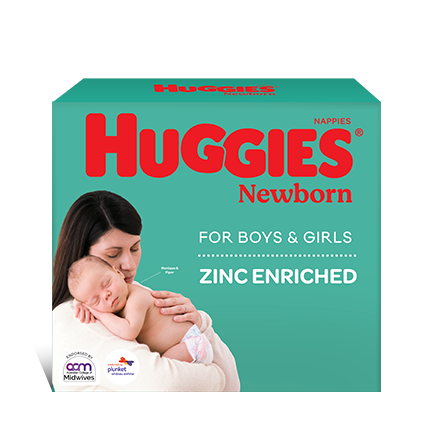Getting pregnant during ovulation
Getting pregnant can certainly seem like a simple process. But it’s fair to say that behind the scenes, there’s a lot of activity which needs to occur in order for it to happen. The first requirement is ovulation, when an egg, preferably a healthy one, is matured and ready to be fertilised by an equally healthy sperm. If the egg is not present, is immature or past its use by date, then fertilisation won’t occur.
Getting pregnant during ovulation relies on a delicate interplay of hormones, biology, timing and sex. Apart from the sex, none of these factors are under our conscious control. So it’s hardly surprising that at the exact moment when fertilisation occurs, we are not aware of it.
Ovulation – just what is it?
Ovulation is the process where an egg is released from one of the woman’s ovaries and makes its way down the fallopian tube towards the uterus. The ovaries are two almond shaped organs which lie deep within the woman’s pelvis. Their role is to support an egg towards maturity each month and then release it. In most women the ovaries take alternate turns in releasing an egg, though in cases of non-identical twins, both ovaries can release an egg at the same time.
After the egg has been released, it is gently guided towards the uterus. Tiny hair like projections line the surface of the fallopian tubes and they “wave” the microscopic egg down to where it needs to go. In the majority of women, fertilisation occurs within the fallopian tube, rather than in the uterus. For the first two weeks after conception, the fertilised egg is known as the zygote and then it is called the embryo.
Need a GPS?
The zygote continues to make its way towards the uterus where it will nestle down and embed for the next 38 weeks or so. If it doesn’t, and it stalls in its progress and continues to grow within the tube, an ectopic pregnancy occurs. Because the fallopian tube cannot expand and is not designed to enlarge like the muscular uterus, the growing embryo can cause a rupture of the fallopian tube. An ectopic pregnancy is a medical emergency and requires immediate specialist attention.
At the same time as the egg is being matured by the ovary, the lining of the uterus is in preparation as well. Blood builds up each month so that the embryo can be nourished and protected. If fertilisation does not occur, then this lining and the egg are shed in the next menstrual period.
Ovulation tips
- Ovulation normally occurs every month over the years of a woman’s fertility, from the age of around 12 years until menopause at approximately 50 years. That means that in the average lifetime a woman will ovulate more than 450 times.
- Most women have a 28 day cycle, though some will ovulate a few days either side of this.
- Between days 12-16 is when ovulation is most likely to occur for women who have a regular 28 day cycle.
- If you have a longer cycle, ovulation is still likely to occur midway between the first day of your last period to your next.
- Ovulation can cause pelvic discomfort and changes in cervical mucous. Mittelschmerz is the name for mid-cycle ovulation pain.
- Stress, an unhealthy lifestyle, illicit drugs, cigarette smoking, excessive alcohol and changes in normal routine can all affect ovulatory cycles.
- Most women only release one egg per month. In women within families where there is a genetic predisposition for multiple births, it is not uncommon to release more than one egg.
- The egg can only survive for 12-24 hours after it has been released. This is why for couples who are keen to get pregnant that they time sex to coincide with ovulation.
- It can take almost a week for the fertilised egg to make its way down the fallopian tube and to embed in the uterine lining.
- A baby girl is born with all the eggs she will ever need. Over the years, her eggs will deplete to the point where at menopause, ovulation can no longer occur.
- It is not necessary for a woman to have ovulated to have a period.
- Women who have not yet had a period, e.g. when breastfeeding, after childbirth, during adolescence, it is still possible they have ovulated.
The follicular phase
The follicular phase or primary stage of the ovulation cycle is equally as important as the luteal or second stage. The follicular phase starts on the very first day of a woman’s period and lasts right up until when she ovulates. Even when she is bleeding, important hormonal changes are occurring which help to support the next months egg towards maturity.
What happens during the follicular phase and luteal phase?
- Oestrogen is low in the early part of the cycle and this impacts on the amount of Follicle Stimulating Hormone (FSH) levels. The FSH works on stimulating the ovarian follicles to mature and release the next egg.
- A feedback system works between the ovaries, the hypothalamus and pituitary gland to signal when the egg is mature, is ready for release and what is needed to support a potential pregnancy.
- There are a number of follicles which compete to release a mature egg but one becomes the dominant follicle.
- A surge of Luteinsing Hormone causes the egg to be ruptured from the ovary. The follicle it came from is called the Corpus Luteum and this releases progesterone which then helps the uterine lining to thicken even more.
- Progesterone helps to support the embryo until the placenta is formed and takes over this role.
How to get pregnant during ovulation
The trick is to not wait until you’ve ovulated, but are getting close to it. Because of the delicate window of time when the egg is ripe for fertilisation, couples need to be prepared. Waiting until ovulation has already occurred reduces the overall chances of conceiving. But it can also increase the chances of conceiving a boy; so you may be intentionally limiting the times you have sex because you’re keen to have a boy baby.
Keep track of your fertility by:
- Using Ovulation Predictor Kits. These are available from pharmacies and vary in price from between $35-$ 65.00.
- Watching for cervical mucous changes. Fertile mucous is stretchier, clear and there is more of it. During the less fertile phases, e.g. just after a period, there is little cervical mucous.
- Taking your basal body temperature. There is a slight elevation in temperature when ovulation is about to occur.
- Keeping a calendar or chart of previous month’s ovulation and menstrual periods.
When to have sex if you’re keen to conceive
- Have sex every second or third day from day seven right through until day 20 of your cycle.
- Regular sex helps to boost the chances of conceiving. But remember may women have conceived as a result of sporadic or one-time sex.
- Don’t forget that sperm can survive for up to five days after they’ve left the man’s body. They can just lie in wait until the egg is released and is ready to be fertilised. So effectively, you don’t need to wait until you’ve ovulated to conceive.
- There is still some dispute whether the 24 hour timing of sex influences the likelihood of conception. Some people believe that sex in the mornings increases the chances of getting pregnant during ovulation and others say it doesn’t matter.
Tips that can help to conceive
- Have a thorough medical check-up if you’re planning to conceive. A healthy weight range and healthy dietary intake are all important. Guidance on lifestyle choices is sometimes necessary to boost the chances of conceiving.
- Folic Acid is a mineral which influences healthy foetal spinal cord development within the first trimester. Although taking supplements won’t help you to conceive, they will reduce the likelihood of having a baby with spina bifida or another neural tube defect.
- Reduce your intake of caffeine, alcohol, nicotine and other drugs. Ensure any medication you are taking is not contraindicated in early pregnancy. Some drugs are what are known as teratogenic e.g. they can interrupt the normal physical development of the foetus in early life.
- Avoid thinking it’s only the woman who needs to adopt a healthy lifestyle to boost the chances of conception. Men benefit from giving up alcohol, eating healthy foods and keeping within a healthy Basal Metabolic Index (BMI) as well.
- Avoid using any form of contraception. When hormonal based contraceptives such as the pill, implanon or Depo Provera have been used for a while, there can be a period of anovulation (no ovulation) for a while until hormone levels stabilise and return to normal after stopping them.
- Keep exercise under control. Some form of regular exercise is ideal for everybody, but going overboard can inhibit regular ovulation. Likewise, dieting excessively and not eating sufficient kilojoules can have an effect on regular ovulation patterning.
Remember
If you have been trying to conceive for a year or more, have been having regular sex and have not been using any means of contraception, then it is reasonable for you to seek medical advice. Delaying this can impact on the overall likelihood of conceiving. As women age, their fertility declines and the chances of falling pregnant drop dramatically.
Don’t assume fertility issues only relate to women. Men can have problems with sperm numbers and motility and contribute just as much to conception issues. Comprehensive fertility investigations need to include both the man and the woman who want to conceive.
Last Published* May, 2024
*Please note that the published date may not be the same as the date that the content was created and that information above may have changed since.
























